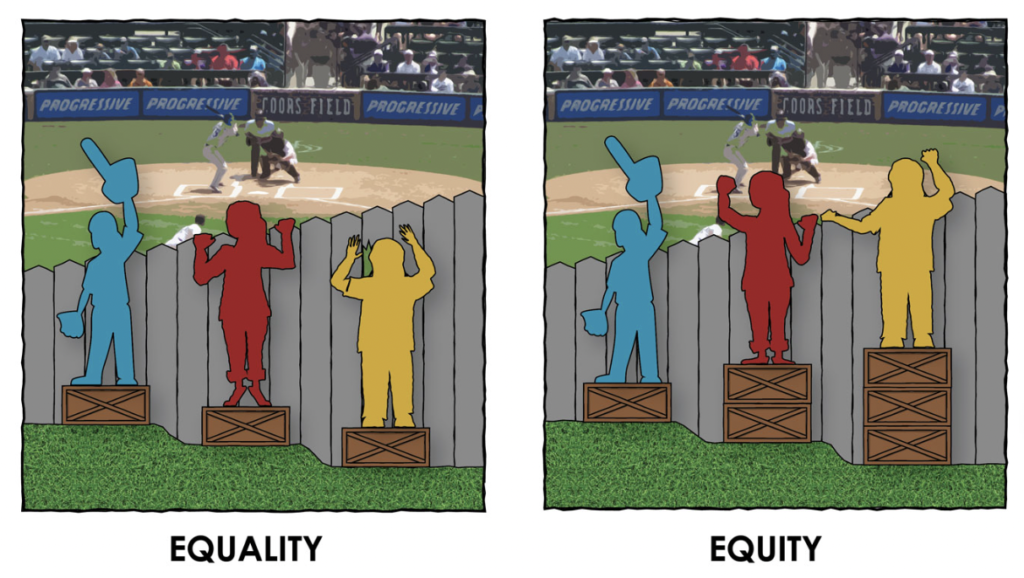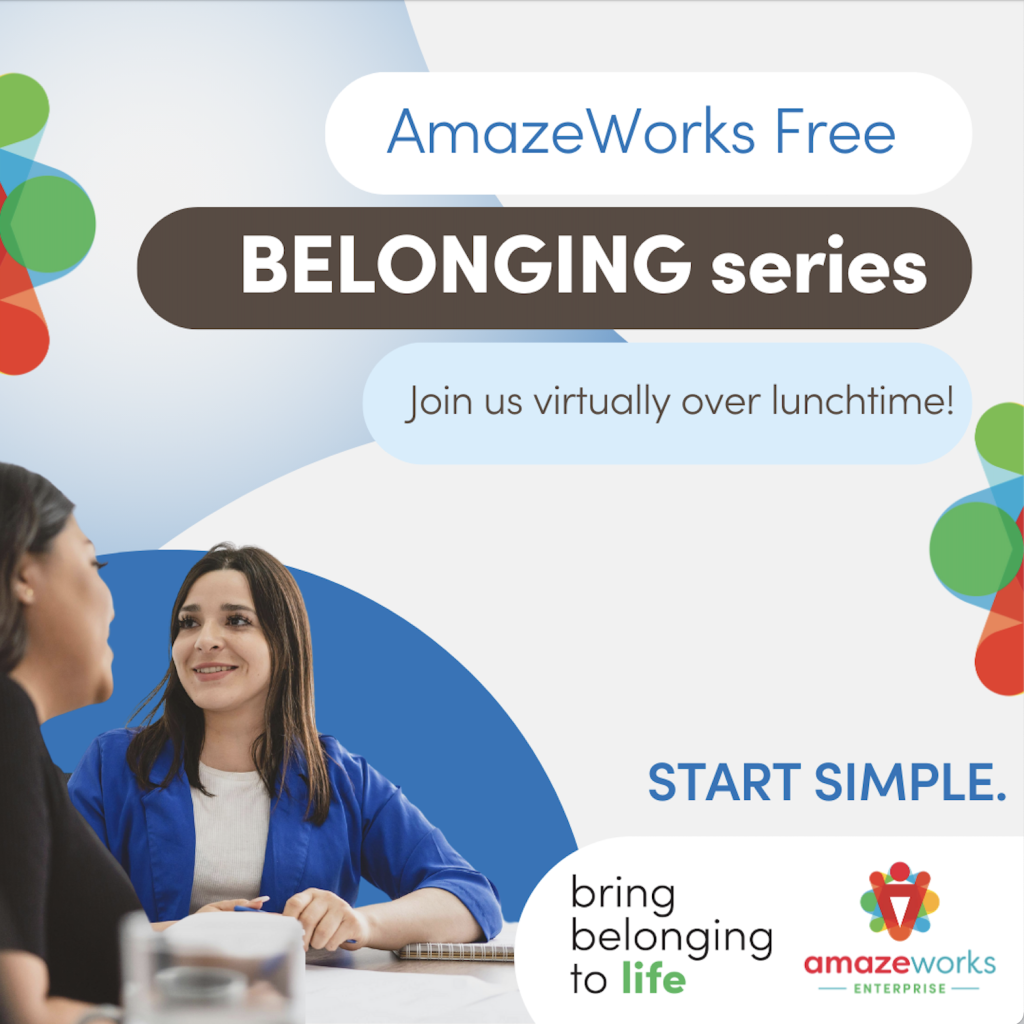“Equality is leaving the door open for anyone who has the means to approach it; equity is ensuring there is a pathway to that door for those who need it.”
~Caroline Belden, The Inclusion Solution
Last volume, we explored identity affirmation—the first of six AmazeWorks Conditions for Belonging. This week, we’re turning our attention to equity.
Equity is essential to building workplace cultures of belonging. It ensures that everyone has fair access to the resources they need to succeed, creating more inclusive, thriving communities. In fact, equity has quietly shaped the world around us—from closed captioning and elevators to floating holidays—helping more people feel seen, supported, and empowered.
In this volume, we invite you to deepen your understanding of equity in the workplace and why it’s a foundational part of DEIB. You’ll find:

Equity builds on our childhood lessons about fairness. Instead of using a “one-size-fits-all” approach, equity acknowledges the different resources we need to succeed. Some of us face more or different barriers, such as bias and discrimination, and therefore require more or different resources and support.
Equity is distinct from equality, meaning everyone receives the same resources and support. Equality assumes that everybody is operating from the same starting point and will face the same opportunities and challenges.
Oftentimes, these two terms are pitted against each other. The reality is that both equity and equality are necessary teammates in creating workplace cultures of belonging. If everyone receives fair or equitable resources and support, then people can have equal access to opportunities.
Let’s revisit this newsletter’s quote:
“Equality is leaving the door open for anyone who has the means to approach it; equity is ensuring there is a pathway to that door for those who need it.” ~Caroline Belden, The Inclusion Solution
Equity builds the pathway—through ramps, ASL interpreters, or IEP/504 plans—removing unnecessary barriers. Equality ensures the door is open when someone arrives, through universal transparency of information around policies and procedures and objective criteria for hiring and promotion.
Equity recognizes that there is no universal starting point. We all have highly individualized needs and experiences. These tangible ways to practice equity in the workplace serve as an entryway to considering various support needs, regardless of whether or not you know they’re present on your team.
Last year, SHRM removed equity from their IE&D initiatives acronym, stating that equity would instead be “integrated under the larger Inclusion framework.”
If organizations aren’t meaningfully and strategically committing to equity, then inclusion is an act of bringing people into a space they may not be seen, heard, or valued. Inclusion has the potential to transform a workplace if the culture is one that accepts, respects, and values differences. All letters of DEI are necessary for the outcome of belonging.
Harvard Business Review critiqued SHRM’s decision, underscoring the importance of equity in workplace culture and performance. Here’s what they recommend instead:
“Commit to achievable equity goals. For instance, leadership at IKEA set specific equity goals to create a path to gender parity. The company publicly committed to ‘ensuring equal opportunities for both women and men, and reaching a 50/50 gender balance in all countries, levels, and positions, including boards and committees.’ As of March 2023, women made up 45% of country CEOs and 56% of top retail management teams globally.”
IKEA recognized that women had fewer pathways to seek job opportunities—not fewer qualifications. Their equity initiatives removed barriers to hiring, opening the door for more women to help IKEA thrive.

Thank you to everyone who attended our first webinar in the Bringing Belonging to Work series! It was an informative hour exploring the Head, Hands, and Heart case for belonging in the workplace.
Spend your lunch hour with AmazeWorks for our next session, Belonging Is the Outcome, Not a Strategy! Join us on May 14 from 12-1PM CT. Stay tuned for more details.
Missed out on The Case for Belonging? Here were some key takeaways:

A 2020 Accenture survey found that while 68% of employers believed they had created environments of belonging, only 36% of employees agreed. That’s a significant disconnect—employer intent isn’t aligning with employee impact. Only about one-third of employees truly feel they belong at work.
Prioritizing equity is one way to close that gap. It ensures employees have what they need to open doors and contribute fully.
For example, Accenture reports that narrowing this gap by just half would lead to real, measurable change for women in the workplace:
When employees’ needs are met, their contributions, and the organization as a whole, can thrive. Equity isn’t just good practice; it’s a path to lasting impact.
As a nonprofit, we rely on income from our Enterprise work to fund bringing belonging to life for children across identities and experiences. That means that your commitment to belonging in your workplace fuels belonging in schools, too.